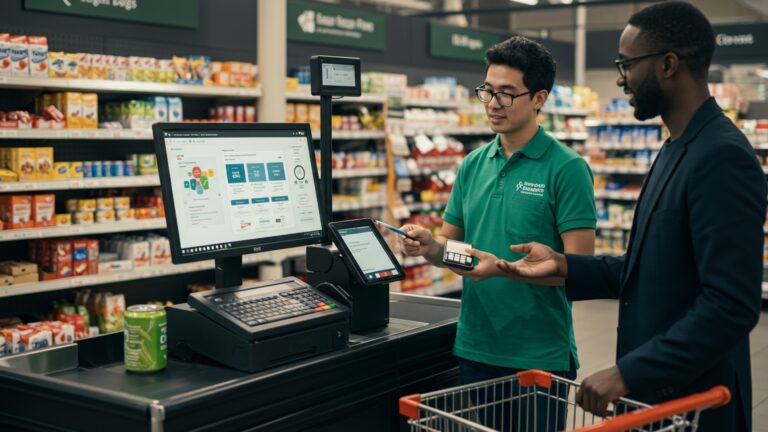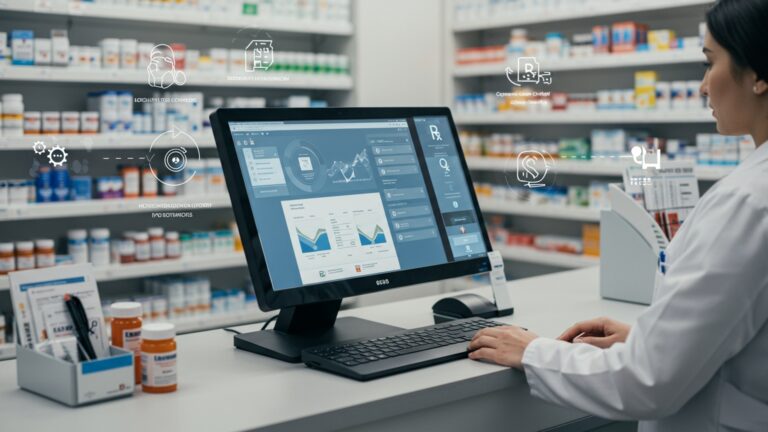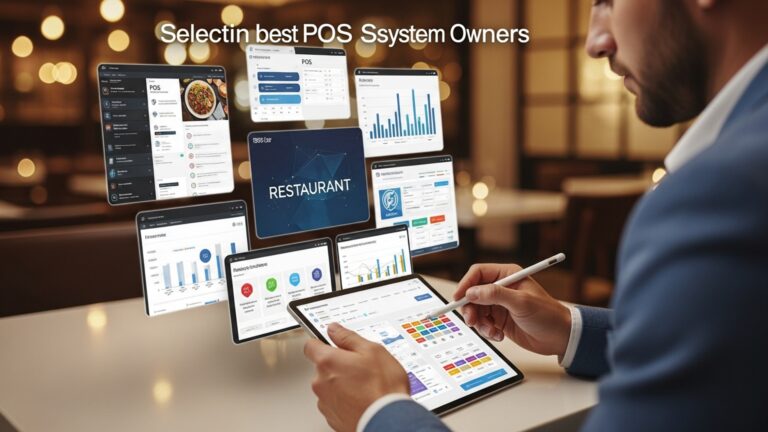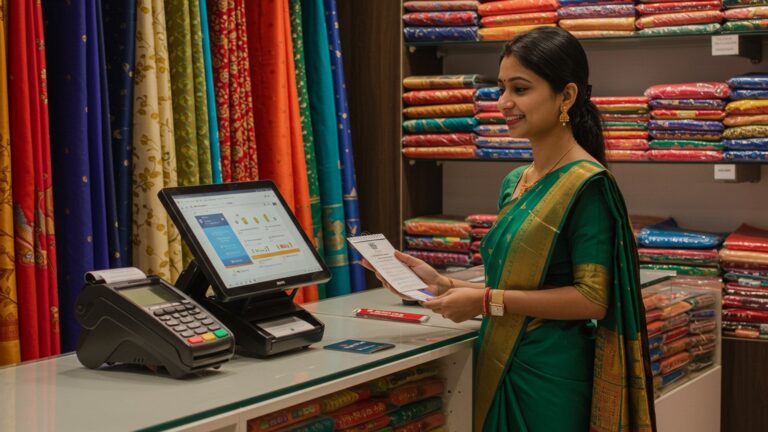Unlock 7 Essential Textile POS System Features to Streamline Your Operations
The dynamic textile industry, navigating unpredictable supply chains and the rapid expansion of e-commerce, requires a POS system far beyond mere transaction processing. Textile businesses managing diverse inventories, from delicate silks to industrial denim rolls, confront intricate challenges that demand specialized capabilities. Advanced textile POS system features now offer real-time, multi-channel stock visibility, meticulously track custom orders with specific fabric requirements. leverage AI-driven insights for predictive inventory management to prevent overstocking. This sophisticated functionality moves past traditional sales, providing a strategic operational edge that streamlines workflows, enhances customer experiences with personalized service. ultimately drives greater efficiency and profitability in a fiercely competitive market.
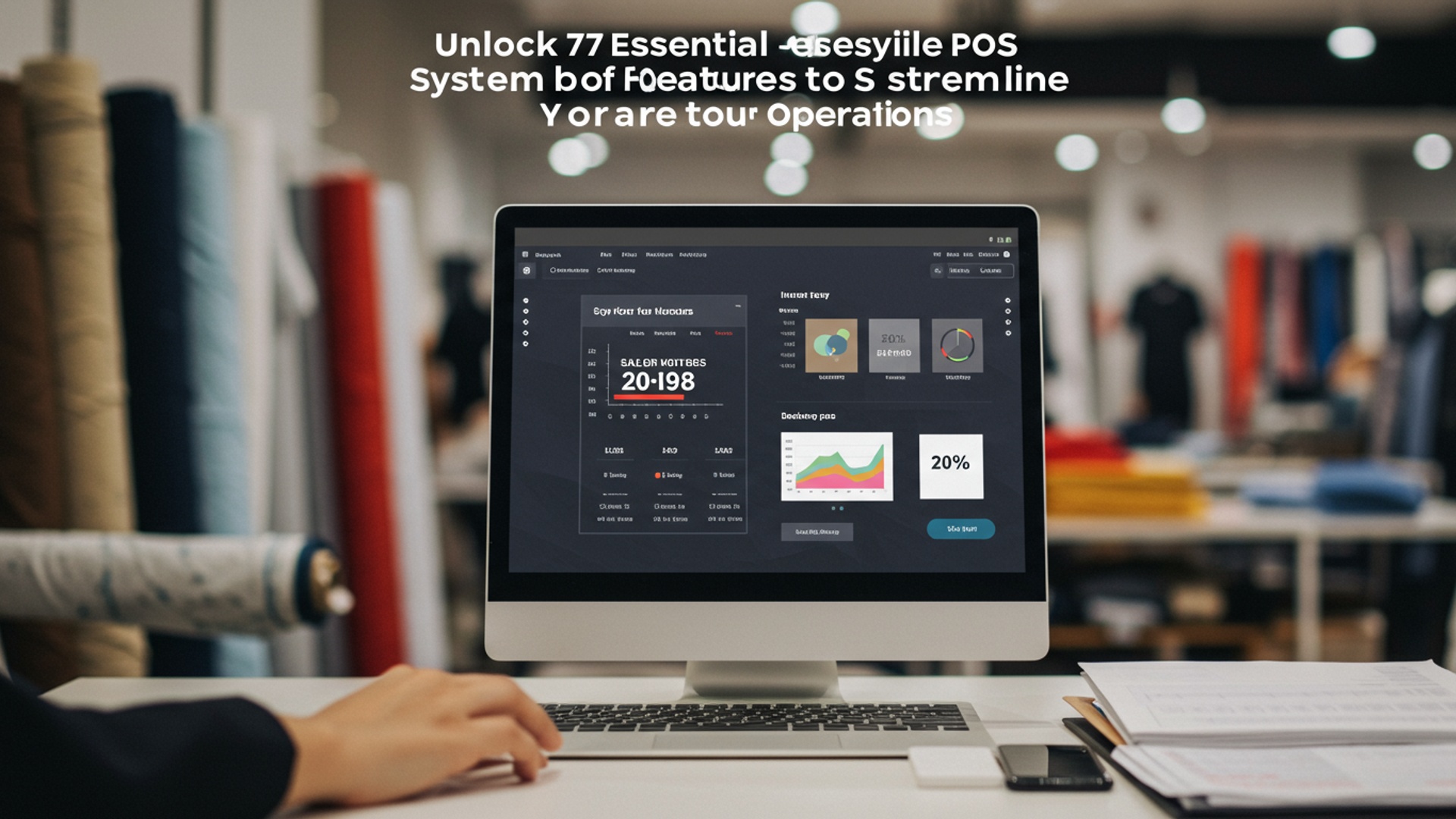
Advanced Inventory Management Tailored for Textiles
One of the most critical textile POS system features is its ability to handle complex inventory management. Unlike generic retail, textile businesses deal with a multitude of variations for a single product: think different sizes (S, M, L, XL), colors (red, blue, green), fabric types (cotton, silk, linen), patterns. even specific dye lots or batches. A robust textile POS system goes far beyond simple quantity tracking; it provides a granular view of every variant.
- Variant Management
- Perpetual Inventory
- Batch and Lot Tracking
This allows you to create a single product, say “Men’s Polo Shirt,” and then easily add dozens of variations like “Men’s Polo Shirt – Large – Blue – Cotton” or “Men’s Polo Shirt – Medium – Green – Linen.” Each variant gets its own SKU, ensuring precise tracking.
The system updates inventory levels in real-time as sales are made, items are received, or returns are processed. This eliminates manual counts and significantly reduces discrepancies, preventing both stockouts and overstocking.
For certain textile products, especially those with specific dye lots or quality control requirements, tracking by batch number can be crucial for quality assurance and recalls.
Consider a scenario: a popular boutique owner, Sarah, noticed she was often running out of her best-selling “Boho Chic Dress” in medium-size blue, while having an excess of small-size red. With her old system, she only saw total dress counts. Her new POS, But, provided a detailed breakdown by size and color. This allowed her to adjust her ordering from suppliers, ensuring she always had the right stock mix, drastically reducing lost sales and dead stock. This deep dive into inventory is a non-negotiable among essential textile POS system features.
When evaluating systems, prioritize those with sophisticated matrix inventory capabilities and real-time updates to manage your specific textile product variations effectively.
Integrated Customer Relationship Management (CRM)
In the competitive textile retail landscape, understanding and nurturing your customer base is paramount. A comprehensive POS system should integrate powerful CRM capabilities, making it one of the most valuable textile POS system features. This isn’t just about collecting names and email addresses; it’s about building detailed customer profiles that inform personalized marketing and service.
- Purchase History Tracking
- Loyalty Programs
- Personalized Communication
Every transaction is linked to a customer profile, providing insights into their preferred styles, sizes, colors. spending habits.
Easily implement and manage points-based systems, tiered rewards, or special discounts for repeat customers, directly through the POS.
Use stored data to segment customers and send targeted promotions, such as notifying them when their favorite brand or size is back in stock, or offering a birthday discount.
Imagine a customer, Mark, walks into a menswear store. The sales associate quickly pulls up Mark’s profile on the POS. They see he recently purchased a suit and often buys specific brands of ties. Armed with this knowledge, the associate can recommend complementary shirts or new tie collections, making Mark feel valued and understood, significantly increasing the likelihood of an additional purchase. This level of personalized service, driven by integrated CRM, is a hallmark of leading textile POS system features.
Look for a system that allows for detailed customer profiling and seamless integration with loyalty programs to foster stronger customer relationships and drive repeat business.
Seamless Sales and Payment Processing
At the core of any POS system is its ability to efficiently process sales transactions. For textile retail, this means a user-friendly interface that handles complex product variations with ease. offers flexible payment options. This is a foundational element among essential textile POS system features.
- Intuitive User Interface (UI)
- Flexible Payment Options
- Integrated Barcode Scanning
- Sales Associate Tracking
The system should be easy for staff to learn and operate, minimizing training time and reducing errors during peak hours. Quick search functions for products (by SKU, name, or barcode) are essential.
Support for various payment methods is crucial, including cash, credit/debit cards (with EMV chip and contactless options), mobile wallets (Apple Pay, Google Pay), gift cards. even layaway plans.
Fast and accurate scanning of product barcodes, including those for variants, speeds up checkout and ensures correct pricing.
Allows for tracking sales performance by individual staff members, which can be useful for commissions and performance evaluations.
Here’s a comparison of a traditional cash register versus a modern textile POS for payment processing:
| Feature | Traditional Cash Register | Modern Textile POS System |
|---|---|---|
| Product Lookup | Manual entry of price/code | Barcode scan, quick search by variant, image-based selection |
| Payment Types | Cash, basic card reader | Cash, all major credit/debit, mobile wallets, gift cards, layaway |
| Customer Data | None | Linked to CRM for purchase history, loyalty points |
| Error Reduction | High potential for manual errors | Automated pricing, variant selection, real-time inventory checks |
| Speed of Transaction | Slower, especially for multiple items | Significantly faster, especially with integrated peripherals |
During a busy holiday sale, the ability for your staff to quickly and accurately process transactions, handle gift cards. manage returns without a hitch is invaluable for maintaining customer satisfaction and minimizing queue times. These robust transaction capabilities are key textile POS system features.
Opt for a system with a highly intuitive interface and comprehensive payment processing capabilities to ensure smooth, fast. error-free checkouts.
Powerful Reporting and Analytics
Making informed business decisions requires data. a top-tier textile POS system provides an abundance of it through its reporting and analytics features. These are more than just raw numbers; they are actionable insights that can drive growth and efficiency, making them indispensable textile POS system features.
- Sales Performance Reports
- Inventory Reports
- Customer Demographics and Purchase Habits
- Employee Performance
- Customizable Dashboards
review sales by product, category, brand, variant, time of day, day of week. even by employee. Identify best-sellers and slow-moving items.
Gain insights into stock levels, turnover rates, popular sizes/colors. identify potential dead stock. This feeds directly into smarter purchasing decisions.
grasp who your customers are and what they buy, allowing for more targeted marketing efforts.
Track individual sales figures, average transaction values. conversion rates to motivate staff and identify training needs.
Many systems offer customizable dashboards where you can view key performance indicators (KPIs) at a glance, tailored to your specific business needs.
A women’s fashion store owner, Maria, used her POS system’s analytics to discover that her evening wear sales peaked significantly on Thursday and Friday evenings, while her casual wear sold best on Saturday mornings. She also identified that a particular brand of denim consistently underperformed, despite high initial investment. Armed with these insights, she adjusted her staffing schedule to align with peak demand, reallocated marketing spend. decided to phase out the underperforming denim brand, replacing it with a more popular one. This strategic use of data is a prime example of the power of advanced textile POS system features.
Prioritize systems that offer flexible, detailed. customizable reporting, allowing you to easily extract meaningful insights to guide your business strategy.
Multi-Store and Omnichannel Management
For textile retailers with multiple physical locations or a combination of brick-and-mortar and online stores, centralized multi-store and omnichannel management is an absolutely essential feature. These sophisticated textile POS system features unify operations, providing a single source of truth for inventory, sales. customer data across all channels.
- Centralized Inventory
- Unified Customer Profiles
- “Buy Online, Pick Up In-Store” (BOPIS) & “Ship From Store”
- Consistent Pricing and Promotions
Manage and view real-time stock levels across all your stores and your e-commerce platform from a single dashboard. This prevents overselling and allows for efficient stock transfers.
A customer’s purchase history and loyalty points are accessible whether they shop online or in any physical store, enabling a consistent and personalized experience.
These capabilities allow customers to purchase items online and collect them from a convenient physical location, or for stores to fulfill online orders directly from their stock, improving efficiency and customer satisfaction.
Ensure that pricing, discounts. promotions are uniform across all channels, eliminating confusion and maintaining brand integrity.
A growing textile chain, “Thread & Needle,” struggled with disparate systems for their three stores and online shop. Inventory was never accurate, leading to customer frustration when online orders couldn’t be fulfilled. After adopting a POS with robust multi-store and omnichannel capabilities, they now have a unified inventory. A customer can check online for a specific jacket, see it’s available at their nearest branch. pick it up within the hour. Returns for online purchases can also be handled seamlessly at any physical store. This synergy across channels, facilitated by advanced textile POS system features, significantly boosted their customer satisfaction and operational efficiency.
If you operate or plan to operate multiple sales channels, invest in a POS system that offers strong multi-store and omnichannel integration to streamline operations and enhance the customer experience.
Vendor and Purchase Order (PO) Management
Efficient supply chain management is crucial for any retail business. textile retail is no exception. Among the often-overlooked yet incredibly powerful textile POS system features is robust vendor and purchase order (PO) management. This streamlines the process of ordering new stock, managing supplier relationships. ensuring your shelves are always stocked with the right products.
- Supplier Database
- Automated Purchase Order Generation
- Receiving and Stocking
- Cost Tracking
- Vendor Returns
Maintain a detailed list of all your vendors, including contact data, terms. product catalogs.
Based on sales data, inventory levels. predefined reorder points, the system can automatically suggest or generate purchase orders, saving significant time and reducing manual errors.
Easily record incoming shipments against purchase orders, automatically updating inventory levels. This ensures accuracy and helps reconcile invoices.
Monitor the cost of goods from different suppliers, helping you negotiate better deals and optimize your profit margins.
Manage returns to suppliers for damaged or incorrect goods, ensuring proper credit or replacement.
An apparel wholesaler, “Fabric Fusion,” previously managed purchase orders using spreadsheets, a tedious and error-prone process. They frequently faced stockouts of popular items and overstocked slow-moving ones. Their new POS system’s PO management feature allowed them to set minimum stock levels for each textile variant. When a variant hit its reorder point, the system automatically generated a draft PO to their preferred supplier, complete with suggested quantities. This not only saved hours of administrative work but also optimized their inventory levels, reducing carrying costs and ensuring they never missed out on sales due due to stock shortages. These backend textile POS system features are vital for financial health.
Seek out a POS system that offers comprehensive PO management capabilities, especially those with automated reordering based on real-time inventory and sales data.
Robust Returns, Exchanges. Store Credit Management
Returns and exchanges are an inevitable part of retail. how efficiently a textile business handles them can significantly impact customer satisfaction and loyalty. A robust system for managing these processes is a hallmark of truly effective textile POS system features.
- Streamlined Return Process
- Easy Exchanges
- Store Credit and Gift Card Issuance
- Fraud Prevention
- Inventory Adjustment
Quickly process returns whether the customer has a receipt or not (by looking up purchase history via their CRM profile or payment method).
Facilitate exchanges for different sizes, colors, or entirely different products, automatically adjusting inventory and any price differences.
Seamlessly issue store credit or gift cards for returns, which can be tracked and redeemed easily in-store or online.
The system can flag unusual return patterns or customers with excessive returns, helping to prevent return fraud.
Automatically updates inventory levels correctly – removing the returned item and adding the exchanged item – maintaining accurate stock counts.
Consider a retail clothing store where a customer wants to return a dress purchased a month ago. has lost the receipt. With a basic POS, this would be a difficult, time-consuming process, potentially leading to a frustrated customer. But, with a sophisticated textile POS system, the associate can look up the customer’s purchase history using their loyalty number or even the credit card used for the original purchase. The system then quickly processes the return, issues a store credit. instantly adjusts the inventory for the returned item. This smooth and efficient process transforms a potentially negative interaction into a positive one, reinforcing customer loyalty. Such comprehensive handling of post-sale transactions is a crucial set of textile POS system features.
Prioritize a POS system that simplifies returns, exchanges. store credit management to enhance customer service, reduce friction. prevent potential losses from return fraud.
Conclusion
Having navigated the seven essential features of a textile POS system, it becomes clear that these aren’t merely functionalities. strategic pillars for modern retail success. Imagine effortlessly tracking every unique SKU, from a silk saree’s intricate weave to a denim jacket’s varied washes and sizes, ensuring you always have what customers demand. This level of precision, coupled with seamless omnichannel capabilities, is crucial in today’s market where customers expect a unified shopping experience across online and physical stores. My personal tip? Don’t just implement; dive deep into the analytics. I’ve seen businesses unlock incredible growth simply by understanding which fabric types sell best in specific seasons or how loyalty programs, a current trend, boost repeat purchases for custom tailoring. Leveraging these features allows you to move beyond basic transactions to proactive inventory management and personalized customer engagement, a recent development vital for competitive advantage. Embrace this digital transformation; your textile business isn’t just selling clothes, it’s crafting experiences. with the right POS, you’re poised for remarkable, streamlined success.
More Articles
Learn 7 Best Practices for Efficient Clothing Inventory Management
7 Essential POS Software Features for Indian Clothing Stores
Maximize Profit Learn 7 Smart Inventory Management Strategies for Indian POS
How to Choose the Best POS Software in India Your Essential Guide
How to Maximize Retail Sales With Powerful POS Software
FAQs
What exactly is a textile POS system anyway?
It’s a specialized point-of-sale system designed specifically for textile businesses like fabric stores, clothing boutiques, or tailor shops. It helps manage sales, inventory, customers. operations all in one place.
How can a specialized POS system really help my textile business run smoother?
By automating many manual tasks, it helps you manage inventory more accurately, speed up checkouts, track customer preferences. get clear insights into your sales. This reduces errors and frees up your time for other essential things.
What are some of those ‘essential features’ you mentioned?
Key features often include robust inventory tracking for different fabric types, colors. sizes, quick and easy sales processing, customer management tools, detailed reporting, employee management. potentially integrated payment processing.
Tell me, how does this system make inventory management less of a headache?
It provides real-time updates on stock levels, automatically adjusts inventory after sales, helps you track variations like bolt numbers or dye lots. can even alert you when it’s time to reorder. No more manual counts or guessing!
Can it help me keep track of my customers better and boost loyalty?
Absolutely. It lets you store customer contact info, purchase history. preferences. This data can be used to personalize offers, manage loyalty programs. build stronger relationships, encouraging repeat business.
What kind of sales insights or reports can I expect to get?
You can get various reports on your best-selling items, peak sales times, employee performance, profit margins. more. These insights are super helpful for making smart business decisions and identifying trends.
Will this system actually save my staff time during daily operations?
Yes, definitely. Faster checkouts, automated inventory updates. easy access to product data mean less time spent on mundane tasks and more time serving customers or focusing on other aspects of the business.

